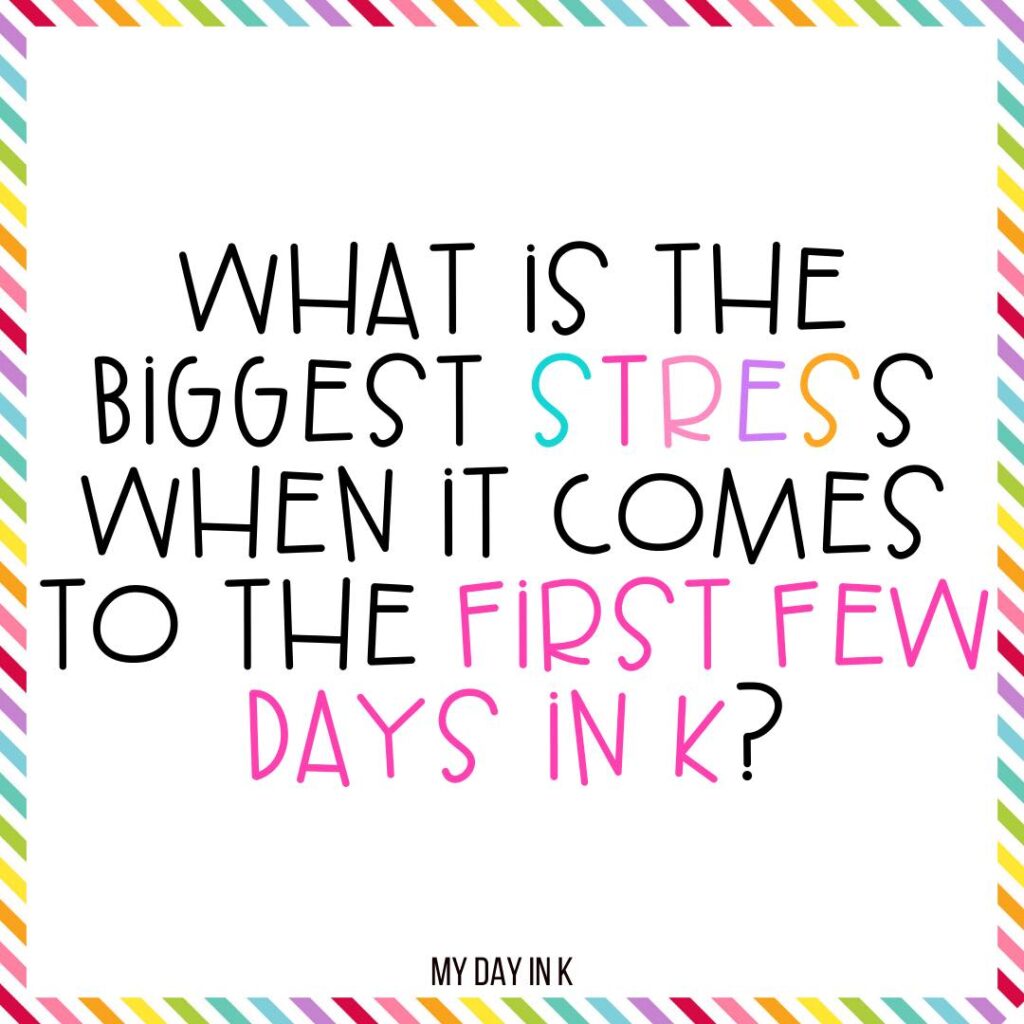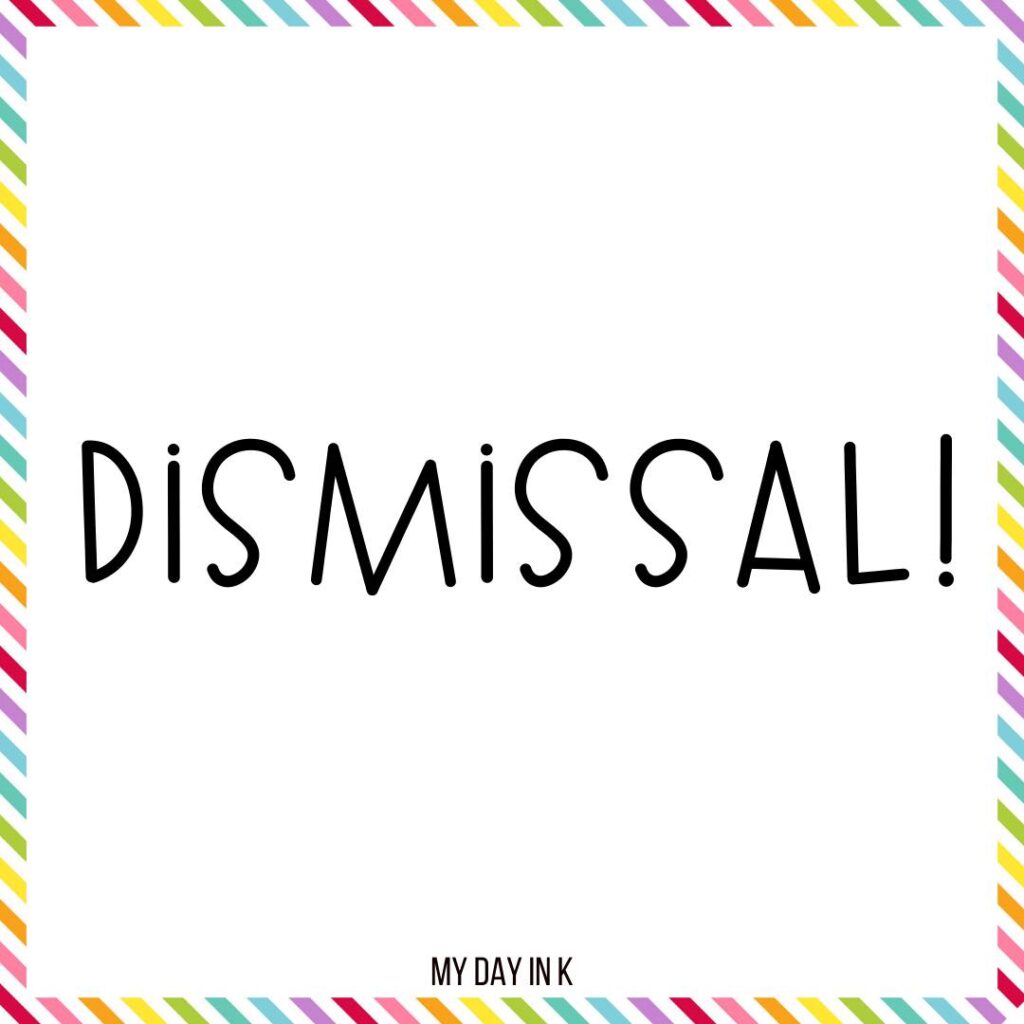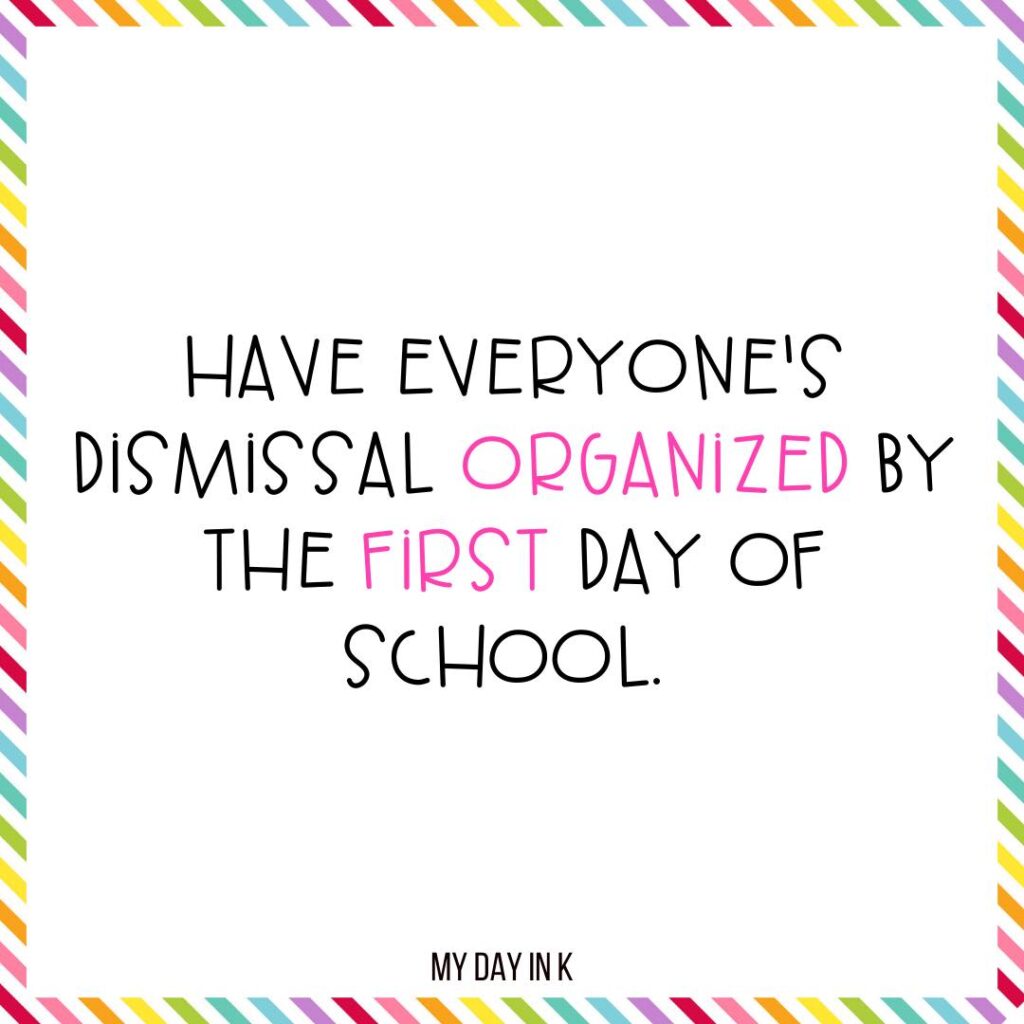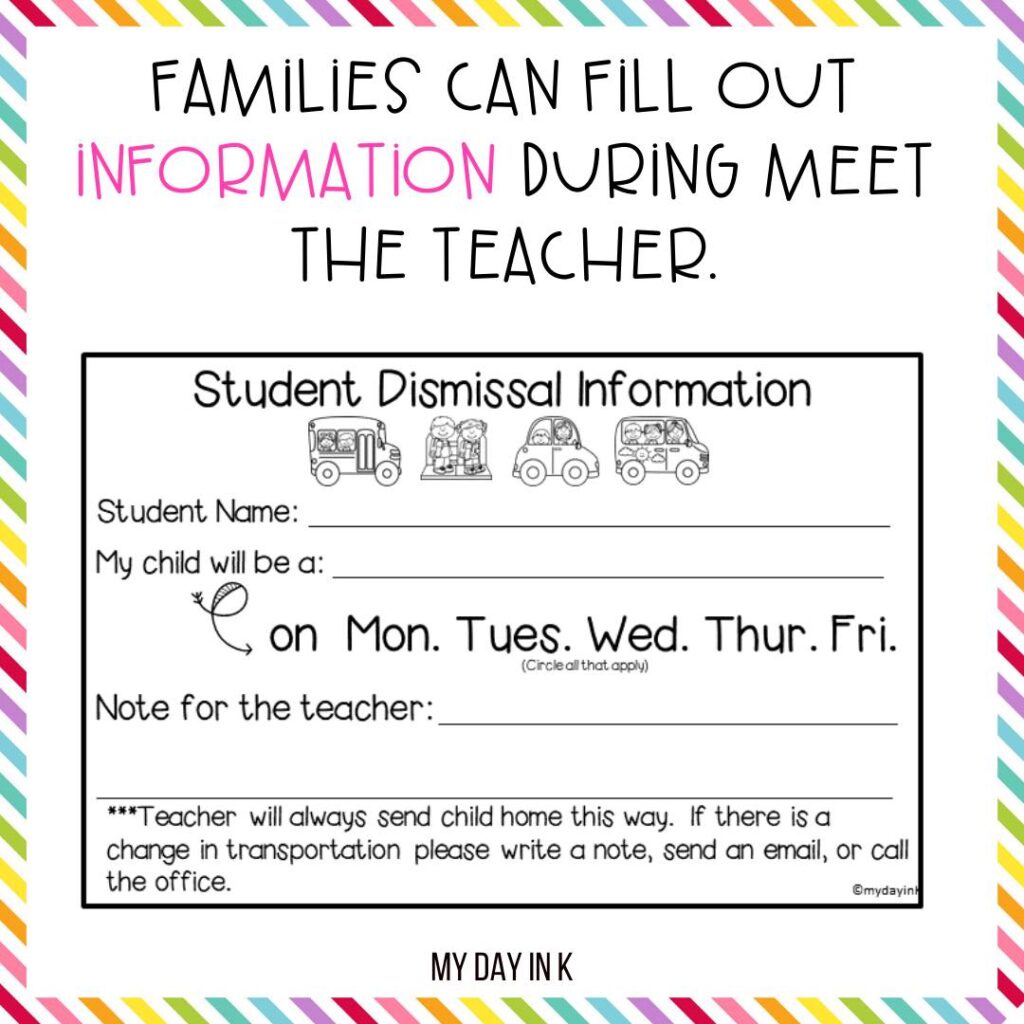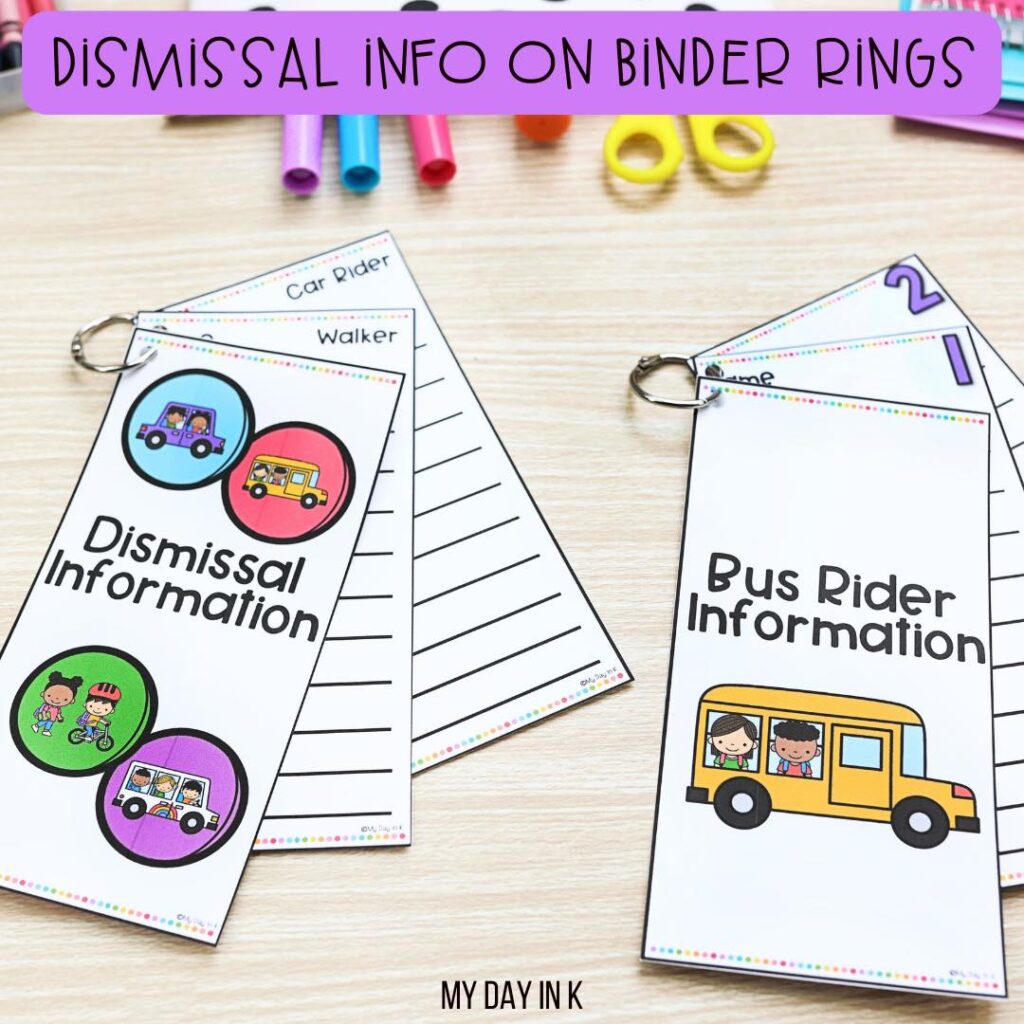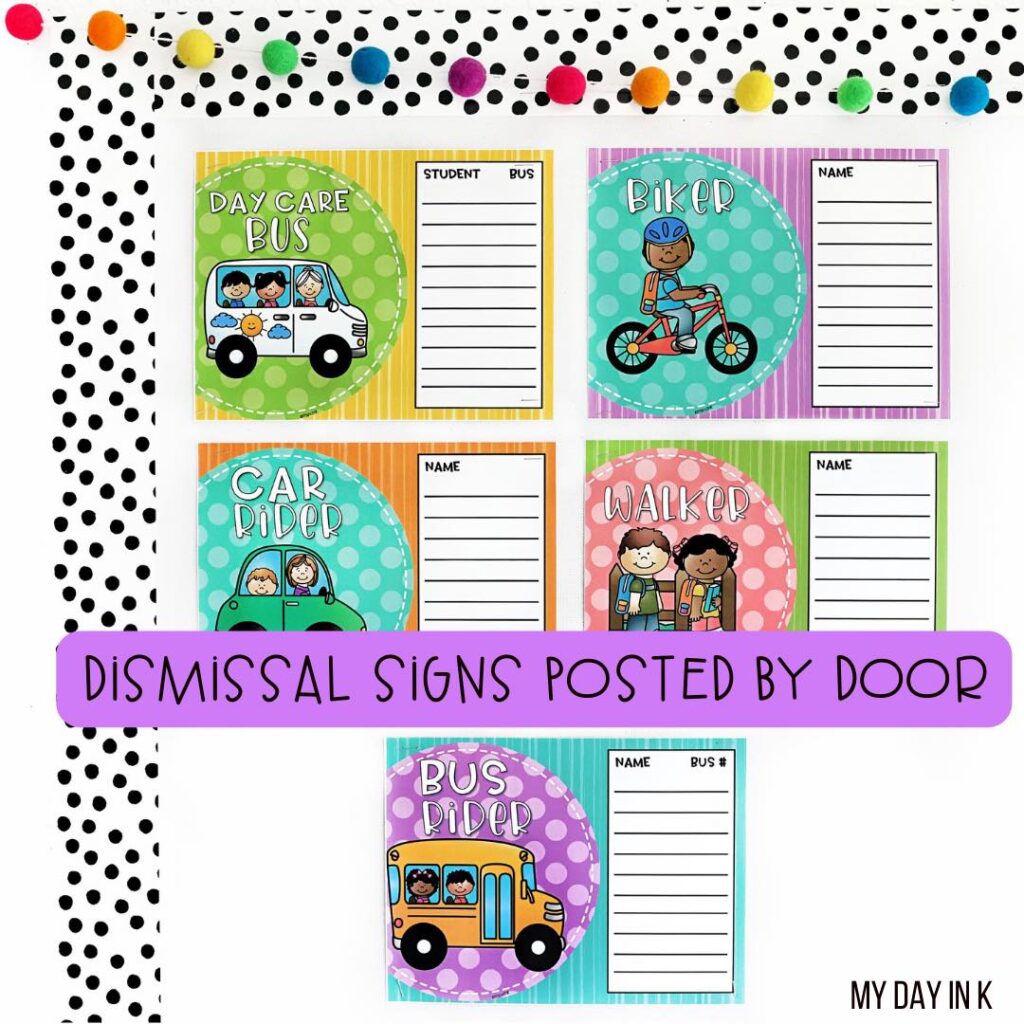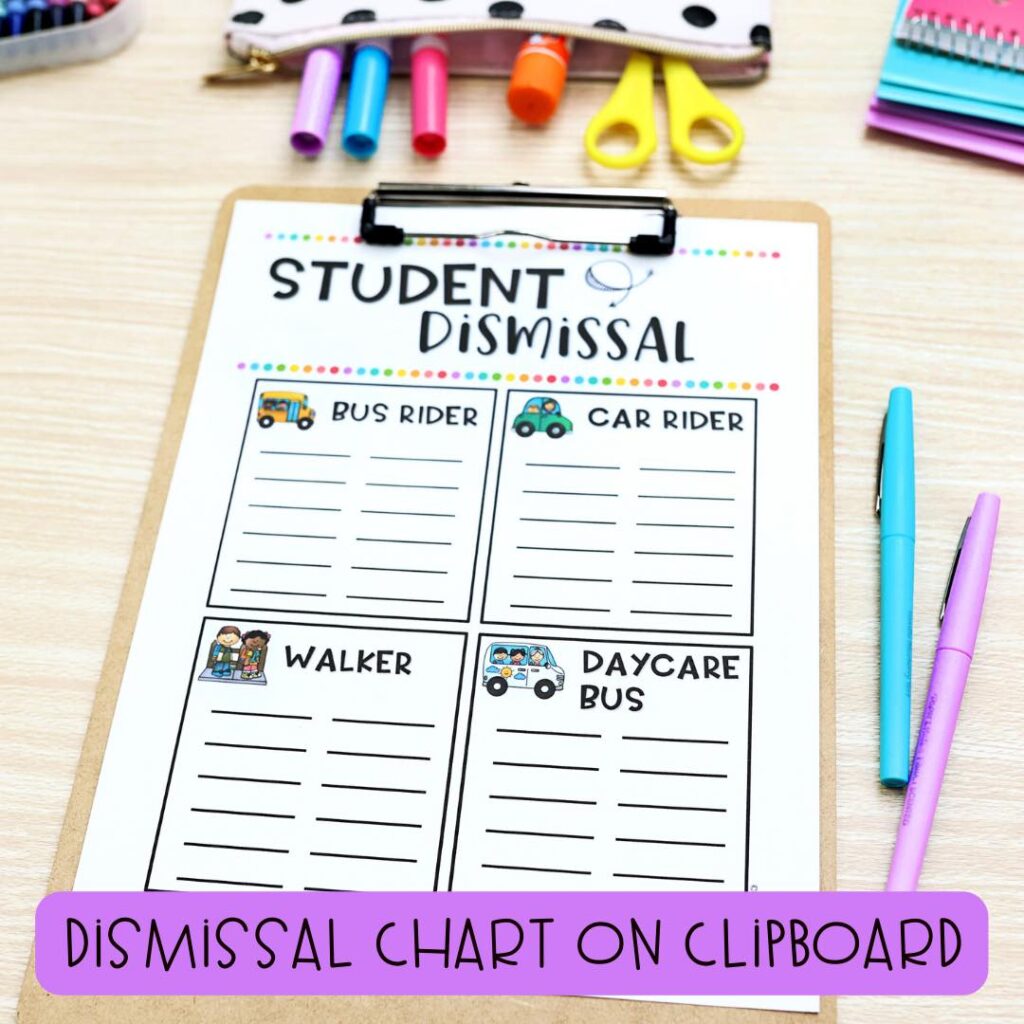Easily Get Your Dismissal Procedures for Elementary Schools Under Control
As we gear up for another exciting school year, one crucial aspect that cannot be overlooked is classroom dismissal procedures. The end of the school day might seem like a whirlwind, but with a little organization and creativity, you can ensure a smooth and safe transition for your students from the classroom to their homes. The dismissal procedures for elementary schools are different wherever you teach, so get those under your belt before you start thinking of your own classroom procedures.
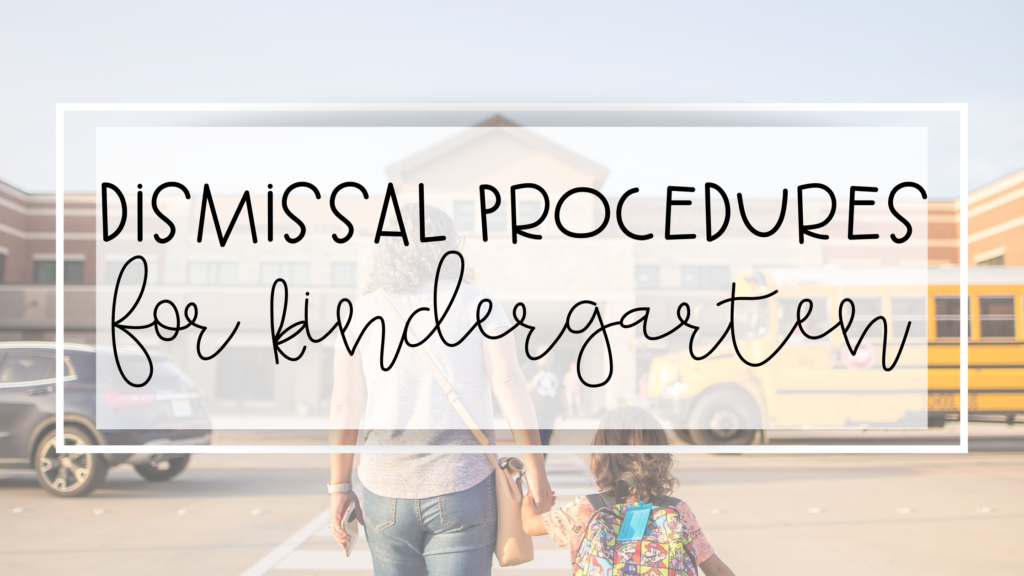
Why Being Organized at Dismissal Is Important
Imagine the chaos of a school dismissal without proper procedures in place. Students wandering around, parents anxiously waiting, school staff overwhelmed – it’s a recipe for confusion and, potentially, safety hazards. This is where classroom dismissal procedures step in. Establishing a clear routine creates a safe environment and minimizes disruptions. Not only does this ensure the physical safety of your students, but it also contributes to their social-emotional learning by providing a sense of structure and security.
During dismissal time, students might experience a mix of excitement and restlessness, especially on the first day of school. A consistent and organized dismissal procedure will help ease their anxieties and set the tone for a positive end to the school day.
5 Ways to Be Organized Before School Starts
Before the school year starts, you must ensure you have yourself organized and ready for dismissal. Start thinking about which dismissal procedures for elementary schools your school uses and how you will run your classroom dismissal to fit in with those of the entire school. Here are five ways I always do to ensure I am ready on the first day.
#1: Send Home Dismissal Cards That Parents Fill Out
Start off the school year on the right foot by sending home dismissal cards for parents to fill out. These cards gather essential information, such as how students will go home – whether they’re car riders, bus riders, or walkers. This not only helps you understand the dismissal preferences but also assists you in preparing accurate records. Remember to include spaces for emergency contact numbers and any special notes that parents might want to communicate.
#2: Set Up Classroom for Dismissal
I always like to think about my arrival time and my dismissal time when I set up my classroom. I want to make it easy for students to hang their stuff when they come into the classroom and grab their stuff when it is time to leave. Think about what classroom clean-up and pack-up procedures you will have in place to make dismissal easier inside the classroom. Try engaging your students in the process by discussing and agreeing upon dismissal routines with them. This empowers them to take ownership of their own routines and helps build a sense of responsibility.
#3: Digital Communication
Leverage web community managers or school apps to keep parents informed about dismissal changes or updates. This tech-savvy approach ensures parents are in the loop without relying solely on paper notes. There are so many options out there now, such as ClassTag and ParentSquare.
#4: Create Bus Tags for Students
Some schools have teachers walk students out to their buses. Others have teacher assistants, and some have bus monitors or other staff watching as students walk themselves. In kindergarten, it is always a good idea to create bus tags with students’ names and how they are getting home. I attach these to string, and students wear them around their necks. Once they get on their bus, to their parents, etc. I ask whoever walks them (if it’s not me) to take the bus tag back for the next day.
#5: Teacher-Student Agreements
Engage your students in the process by discussing and agreeing upon dismissal routines with them. This empowers them to take ownership of their own routines and helps build a sense of responsibility.
3 Ways to Be Organized During the First Days of School
Now that school started, and you have a bunch of little learners running around, it can be hard to figure out where everyone goes, especially if it is your first year and you’re a little stressed out! Dismissal is scary for many first-year teachers, and it’s okay to be a little anxious. But, having a good dismissal system may be helpful.
#1: Using Dismissal Cards on Note Rings
As the school year kicks off, utilize dismissal cards on note rings to keep all the vital information easily accessible. Hang these note rings near your classroom door for quick reference. This saves valuable time during the bustling dismissal period, allowing you to oversee the transition process efficiently.
#2: Dismissal Information on a Bulletin Board
Create a vibrant and informative dismissal bulletin board within your classroom. Dedicate sections to each grade level or mode of dismissal (car riders, bus riders, walkers). Display students’ names and their designated dismissal methods. This visual aid not only aids teachers but also helps students remember their routines.
#3: Dismissal Information on a Clipboard
For teachers who need to move around during dismissal, having a portable clipboard with dismissal information is a game-changer. You can easily refer to the clipboard to verify dismissal modes and ensure every student is accounted for before they leave your supervision.
Dismissal Procedures for Elementary Schools Made Easy
Classroom dismissal procedures are a crucial part of maintaining classroom management and ensuring the safety and well-being of your students. By establishing organized routines, incorporating creative ideas, and leveraging technology, you can make dismissal time a smooth and enjoyable process for both students and teachers.
Remember, these ideas are just the beginning – feel free to adapt and innovate to best suit your classroom’s needs. Here’s to a fantastic school year filled with efficient dismissals, happy students, and engaged parents!


